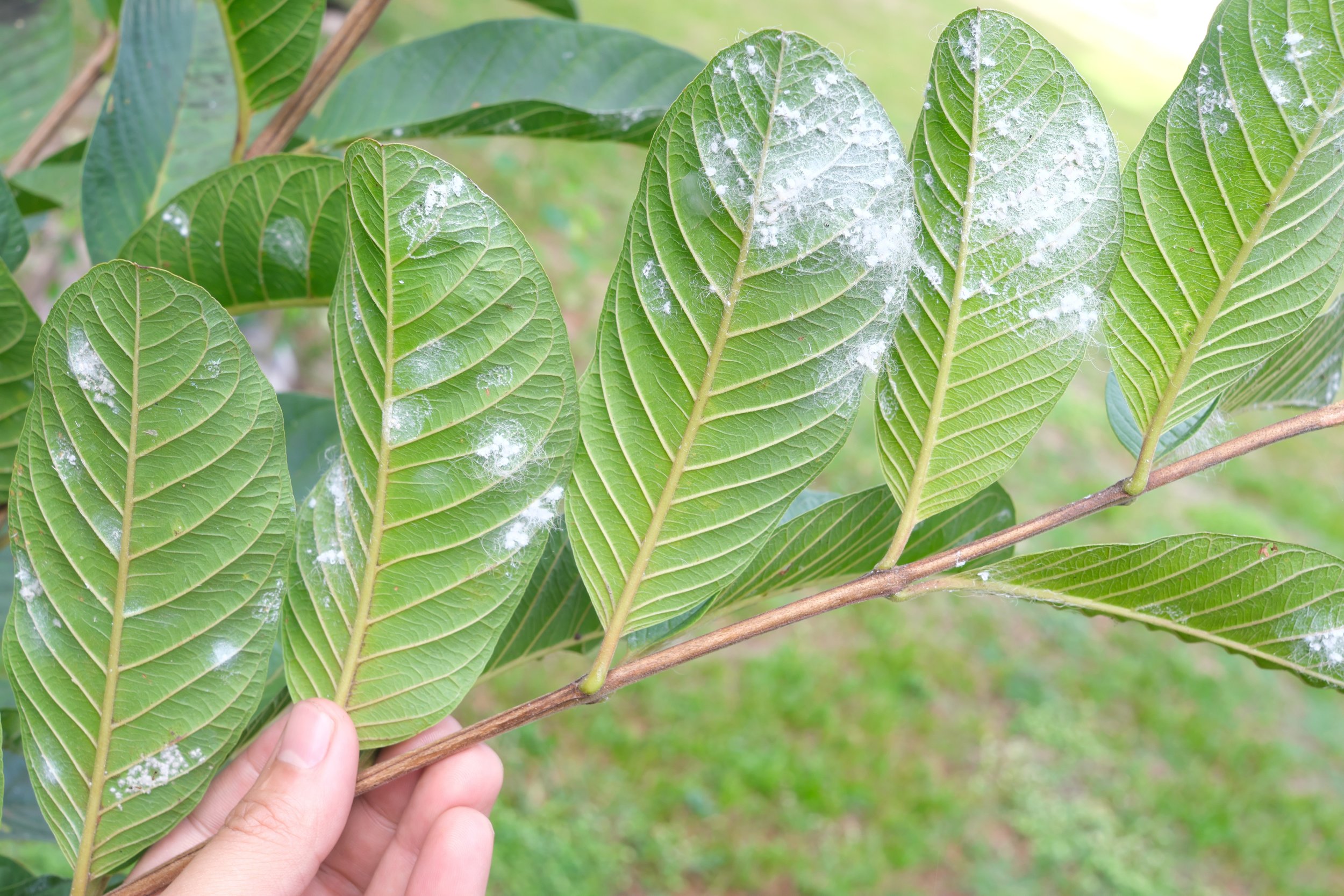Battling Whiteflies in Coastal San Diego County: How to Protect Your Garden from This Common Pest
If you've noticed tiny white insects fluttering around your hibiscus, plumerias, or other garden favorites here in coastal San Diego County, you're not alone. These pesky intruders are most likely whiteflies, a common but destructive garden pest that thrives in our warm coastal climate.
A clear view of the winged insect (whitefly) often seen on plumeria and hibiscus foliage.
What Are Whiteflies?
Whiteflies are small, winged insects that resemble miniature moths. Despite their name, they are more closely related to aphids and mealybugs. They feed on the undersides of leaves by piercing them and sucking out the plant's juices, which can lead to yellowing leaves, stunted growth, and even plant death if left unchecked.
In coastal San Diego's temperate climate, whiteflies can reproduce year-round, making early detection and control especially important for gardeners.
Plants at Risk
Whiteflies are not particularly picky, but they do seem to love:
Plumerias
Hibiscus
Tomatoes
Peppers
Cucumbers
Citrus trees
If you grow any of these, keep a close eye out for signs of infestation.
How to Detect Whiteflies
Look for these telltale signs:
A cloud of tiny white insects rising when you disturb a plant
Sticky residue (called honeydew) on leaves
Yellowing or curling leaves
Black sooty mold, which grows on honeydew deposits
Check the undersides of leaves regularly—whiteflies love to hide there.
Heavy whitefly infestation on the back of leaves
Preventative Measures
An ounce of prevention is worth a pound of cure. Here are some ways to deter whiteflies:
Companion Planting: Marigolds and nasturtiums can help repel whiteflies.
Reflective Mulch (foil or old CDs work well): This confuses whiteflies and reduces their ability to find host plants.
Healthy Soil: Strong, healthy plants are more resistant to pests. Use compost and mulch to enrich your garden beds.
Regular Monitoring: Inspect plants at least once a week.
What to Do If You Have an Infestation
If whiteflies have already moved in, don’t panic. Here are some effective ways to control them:
1. Hose Them Off: Spray plants with a strong stream of water to dislodge whiteflies and their larvae.
2. Yellow Sticky Traps: These traps attract and capture adult whiteflies, helping to reduce their population.
3. Commercial Neem Oil or Insecticidal Soap: Spray the undersides of leaves thoroughly. These treatments are safe for most plants and won’t harm beneficial insects if used correctly.
4. Homemade Insecticidal Spray: Mix 1 tablespoon of dish soap and 1 tablespoon of cooking oil (like canola or vegetable oil) with 1 quart of water. Shake well and spray directly onto the undersides of affected leaves. The oil helps suffocate the insects, while the soap breaks down their protective coating.
5. Introduce Natural Predators: Ladybugs, lacewings, and parasitic wasps are all-natural enemies of whiteflies and can help keep populations in check.
6. Prune Heavily Infested Areas: Cut and dispose of severely affected branches or plants to prevent the spread.
Plumeria Tip: If you notice that only one or two leaves on your plumeria are infested, simply pluck them off and throw them away. This can stop the spread before it becomes a major problem.
Final Thoughts
Whiteflies are a challenge, but with vigilance and a few smart strategies, you can protect your coastal San Diego garden from their damaging effects. Stay observant, act early, and don't be afraid to mix and match methods for best results.
Happy gardening!


